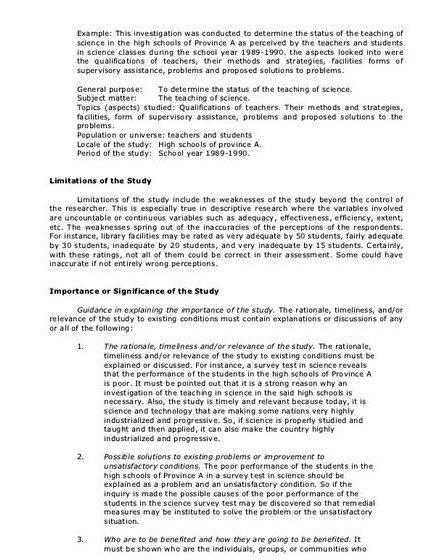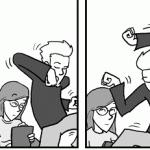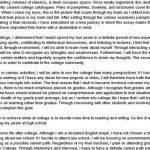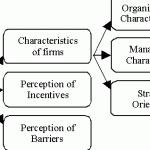EXPECTATIONS
What the reader expects from the Research Limitations section
of your dissertation
All research suffers from limitations. whether it is performed by undergraduate and master’s level dissertation students, or seasoned academics. These research limitations range from flaws in the research design, which can be quite serious, to more common problems, such as the challenge of justifying how and why your findings answer the research questions and/or hypotheses that were set. This article explains some of the broader rules to think about when writing the Research Limitations section of your dissertation. In particular, your Research Limitations section should be: (a) well structured; (b) properly weighted; (c) honest; and (d) pragmatic. Each of these is discussed in turn.
There is no “one best way” to structure this Research Limitations section of your dissertation. However, like the dissertation abstract, structure is important because you typically only have around 200 to 500 words to explain and justify all the potential weaknesses and/or limitations in your dissertation. In producing a Research Limitations section that is well structured, we recommend a structure based on three moves (i.e. the announcing. reflecting and forward looking move):
The announcing move immediately allows you to identify the limitations of your dissertation and explain how important each of these limitations is.
The reflecting move provides greater depth, helping to explain the nature of the limitations and justify the choices that you made during the research process.
Finally, the forward looking move enables you to suggest how such limitations could be overcome in future.
The collective aim of these three moves is to help you walk the reader through your Research Limitations section in a succinct and structured way.
This will make it clear to the reader that you (a) recognise the limitations of your own research, (b) understand why such factors are limitations, and (c) can point to ways of combating these limitations if future research was carried out.
To understand more about each of these moves and how to clearly structure the Research Limitations section of your dissertation, read the section: How to structure the Research Limitations section of your dissertation .
You should consider dedicating around 10-20% of the total word count of the Research Limitations section to the announcing move. 60-70% to the reflecting move and 10-20% to the final, forward looking move. Certainly, it is important to acknowledge the potential limitations of your dissertation in the announcing move. as well as suggest how future research could overcome such limitations. However, the focus of the Research Limitations section should be on explaining the nature of your limitations, the degree to which these were a problem, as well as justifying the reasons why you conducted the research the way you did. Since this section of the dissertation is generally only 200-500 words, the section should focus on those limitations that you feel had the greatest impact on your findings, as well as your ability to effectively answer your research questions and/or hypotheses.

You are not writing a 2000 word critical review of the limitations of your dissertation.
Acknowledging the limitations of your research is not a way of highlighting to the reader where (and why) they should reduce the marks you receive for your dissertation. Instead, the Research Limitations section provides the right balance to the final chapter of your dissertation (often Chapter Five: Discussion/Conclusions ). It makes it clear to the reader that you recognise the limitations of your own research, that you understand why such factors are limitations, and can point to ways of combating these limitations if future research was carried out. Communicating such an understanding to the reader demonstrates the command that you have over your research, which should help in improving the marks you receive for your dissertation. Added to this, the person reading your dissertation can easily identify potential weaknesses, even if you have not spelt these out. This comes with years of experience in teaching and research, which many academics have. Trying to hide potential limitations to your dissertation is not advised.
There are many ideals in research. For the researcher that prefers to adopt a quantitative research design [see the section on Research Designs for more information about research designs], a probability sampling technique is viewed as the ideal because it enables the researcher to make generalisations (i.e. statistical inferences ) from the sample to the population being studied [see the articles on Sampling: The basics and Probability sampling to learn more about sampling and probability sampling techniques].
For example:
If the researcher was investigating the career choices of students at a university of 20,000 students (the population in question), only a small number of these students (e.g. a sample of 400 students), may need to be surveyed. It may then be possible to make generalisations about the career choices of the population of 20,000 students based on the data collected from the sample of 400 students [see the article, Probability sampling. if you want to know more about this example].
However, as all of the articles on types of probability sampling technique illustrate (e.g. simple random sampling. stratified random sampling ), using a probability sampling technique can be very difficult. In fact, there are many reasons why it may be impossible (or near on impossible) to use a probability sampling technique. In such cases, researchers are forced to use non-probability sampling techniques. where is it no longer possible to make generalisations (i.e. statistical inferences) from the sample to the population being studied. However, this does not mean that any study that uses a quantitative research design, but fails to use a probability sampling technique, is of low quality or flawed. It simply means that some things that are limitations in theory are not necessarily weaknesses in practice. It means that you need to adopt a pragmatic approach to your research, whilst acknowledging potential limitations.
If you know the limitations in your dissertation, you may find the next section, How to structure the Research Limitations section of your dissertation. helpful.
EXPECTATIONS
What the reader expects from the Research Limitations section
of your dissertation
All research suffers from limitations. whether it is performed by undergraduate and master’s level dissertation students, or seasoned academics. These research limitations range from flaws in the research design, which can be quite serious, to more common problems, such as the challenge of justifying how and why your findings answer the research questions and/or hypotheses that were set. This article explains some of the broader rules to think about when writing the Research Limitations section of your dissertation. In particular, your Research Limitations section should be: (a) well structured; (b) properly weighted; (c) honest; and (d) pragmatic. Each of these is discussed in turn.
There is no “one best way” to structure this Research Limitations section of your dissertation. However, like the dissertation abstract, structure is important because you typically only have around 200 to 500 words to explain and justify all the potential weaknesses and/or limitations in your dissertation. In producing a Research Limitations section that is well structured, we recommend a structure based on three moves (i.e. the announcing. reflecting and forward looking move):
The announcing move immediately allows you to identify the limitations of your dissertation and explain how important each of these limitations is.
The reflecting move provides greater depth, helping to explain the nature of the limitations and justify the choices that you made during the research process.
Finally, the forward looking move enables you to suggest how such limitations could be overcome in future.
The collective aim of these three moves is to help you walk the reader through your Research Limitations section in a succinct and structured way. This will make it clear to the reader that you (a) recognise the limitations of your own research, (b) understand why such factors are limitations, and (c) can point to ways of combating these limitations if future research was carried out.
To understand more about each of these moves and how to clearly structure the Research Limitations section of your dissertation, read the section: How to structure the Research Limitations section of your dissertation .
You should consider dedicating around 10-20% of the total word count of the Research Limitations section to the announcing move. 60-70% to the reflecting move and 10-20% to the final, forward looking move. Certainly, it is important to acknowledge the potential limitations of your dissertation in the announcing move. as well as suggest how future research could overcome such limitations. However, the focus of the Research Limitations section should be on explaining the nature of your limitations, the degree to which these were a problem, as well as justifying the reasons why you conducted the research the way you did. Since this section of the dissertation is generally only 200-500 words, the section should focus on those limitations that you feel had the greatest impact on your findings, as well as your ability to effectively answer your research questions and/or hypotheses. You are not writing a 2000 word critical review of the limitations of your dissertation.
Acknowledging the limitations of your research is not a way of highlighting to the reader where (and why) they should reduce the marks you receive for your dissertation. Instead, the Research Limitations section provides the right balance to the final chapter of your dissertation (often Chapter Five: Discussion/Conclusions ). It makes it clear to the reader that you recognise the limitations of your own research, that you understand why such factors are limitations, and can point to ways of combating these limitations if future research was carried out. Communicating such an understanding to the reader demonstrates the command that you have over your research, which should help in improving the marks you receive for your dissertation. Added to this, the person reading your dissertation can easily identify potential weaknesses, even if you have not spelt these out. This comes with years of experience in teaching and research, which many academics have. Trying to hide potential limitations to your dissertation is not advised.
There are many ideals in research. For the researcher that prefers to adopt a quantitative research design [see the section on Research Designs for more information about research designs], a probability sampling technique is viewed as the ideal because it enables the researcher to make generalisations (i.e. statistical inferences ) from the sample to the population being studied [see the articles on Sampling: The basics and Probability sampling to learn more about sampling and probability sampling techniques].
For example:
If the researcher was investigating the career choices of students at a university of 20,000 students (the population in question), only a small number of these students (e.g. a sample of 400 students), may need to be surveyed. It may then be possible to make generalisations about the career choices of the population of 20,000 students based on the data collected from the sample of 400 students [see the article, Probability sampling. if you want to know more about this example].
However, as all of the articles on types of probability sampling technique illustrate (e.g. simple random sampling. stratified random sampling ), using a probability sampling technique can be very difficult. In fact, there are many reasons why it may be impossible (or near on impossible) to use a probability sampling technique. In such cases, researchers are forced to use non-probability sampling techniques. where is it no longer possible to make generalisations (i.e. statistical inferences) from the sample to the population being studied. However, this does not mean that any study that uses a quantitative research design, but fails to use a probability sampling technique, is of low quality or flawed. It simply means that some things that are limitations in theory are not necessarily weaknesses in practice. It means that you need to adopt a pragmatic approach to your research, whilst acknowledging potential limitations.
If you know the limitations in your dissertation, you may find the next section, How to structure the Research Limitations section of your dissertation. helpful.




 Jinwen xiao phd thesis writing
Jinwen xiao phd thesis writing Thesis writing in progress phd comics door
Thesis writing in progress phd comics door Effective thesis writing ppt for kids
Effective thesis writing ppt for kids Transposing letters when writing a thesis
Transposing letters when writing a thesis Export marketing plan thesis writing
Export marketing plan thesis writing






